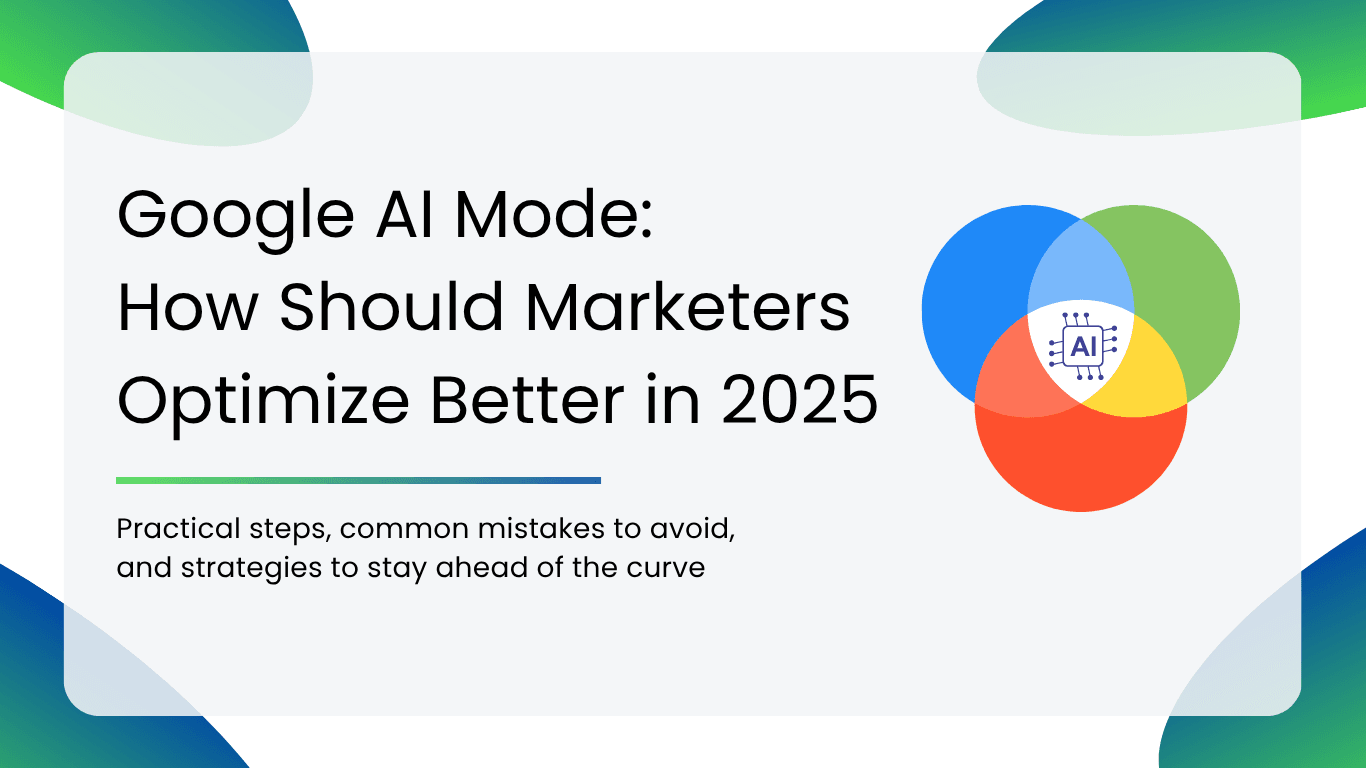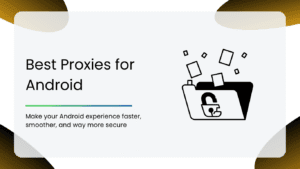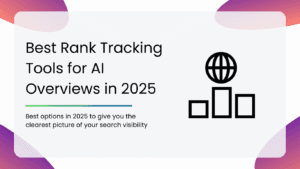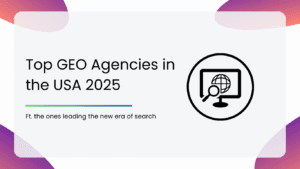Google AI Mode is changing the game for digital marketers. With such impact, understanding how to work with AI instead of against it is crucial. And the best part is that getting started doesn’t require hours of training or complex coding. It just requires knowing where to focus and how to leverage AI smartly.
In this article, we’ll break down how marketers can optimize better in 2025 using Google AI Mode. We’ll discuss some practical steps, common mistakes to avoid, and strategies to stay ahead of the curve.
What is Google AI Mode?
Google AI Mode is basically Google’s way of supercharging search, ads, and content recommendations with artificial intelligence. It can analyze mountains of data in seconds and give you actionable insights that would normally take hours or even days to figure out manually.
For marketers, this means Google AI Mode isn’t just about automating tasks. It’s about making smarter decisions faster. From predicting which ads will perform best to suggesting content topics your audience actually likes to see, it’s designed to increase precision.
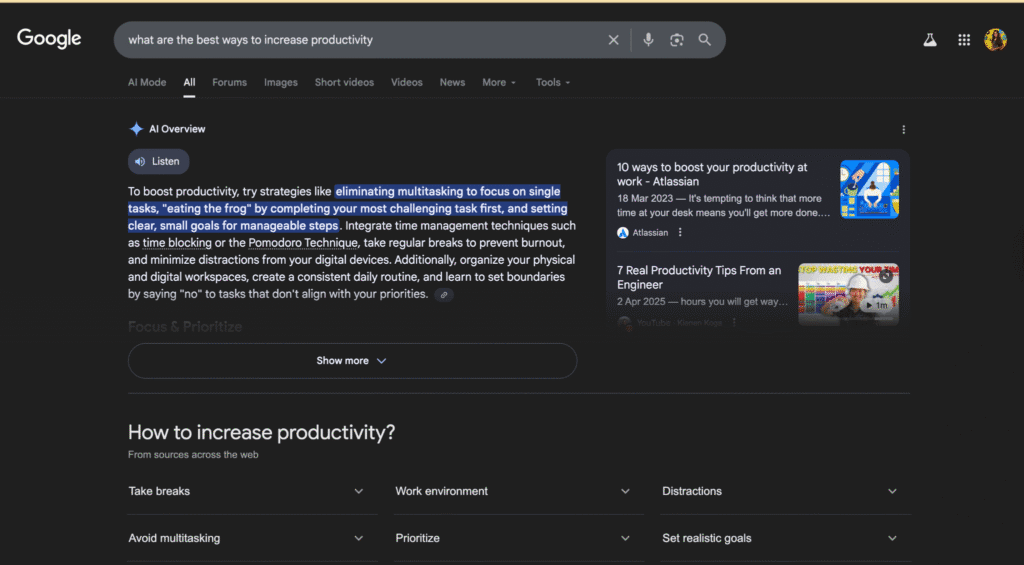
How Google AI Mode Changes Search
Search isn’t just about showing a list of links anymore; it’s about delivering smarter, richer, and more interactive results.
Here’s how it’s shaping things for marketers:
1. Summaries Over “10 Blue Links”
Instead of sending users to ten different pages, Google AI Mode often provides a concise summary right at the top. This means marketers need to focus on getting their content featured in these AI-generated summaries, not just on ranking for traditional SERPs.
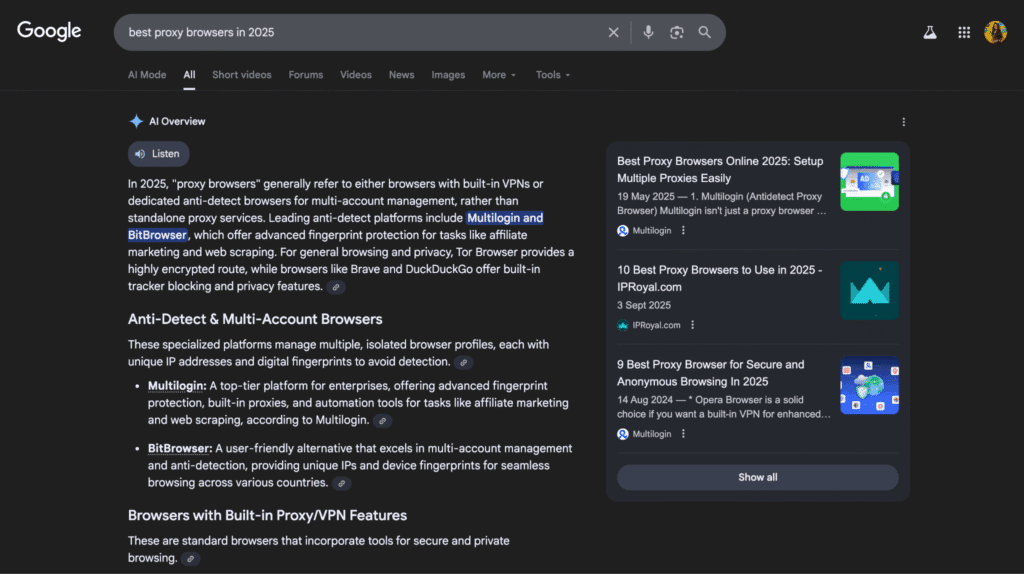
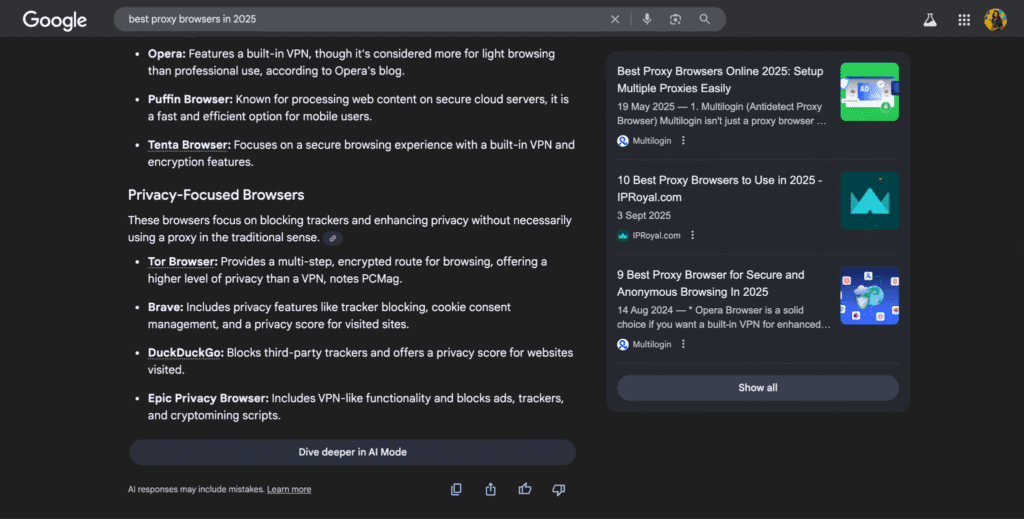
2. Multimodal Input
Google AI now understands text, voice, and even images. That opens up new opportunities for marketers to optimize across different formats, like voice search optimization, visual content, and image-driven campaigns.
3. Conversational Responses & Follow-Up Queries
Users can now ask follow-up questions and engage in a back-and-forth with AI, almost like chatting with a real expert. Your content needs to answer questions comprehensively and contextually to stay visible in these conversational threads.
4. Sidebar Citations vs. Standard SERPs
Instead of traditional rankings, Google AI Mode often displays a sidebar with cited sources. Brands that are authoritative and trustworthy have a higher chance of getting cited, meaning your credibility and content accuracy matter more than ever.
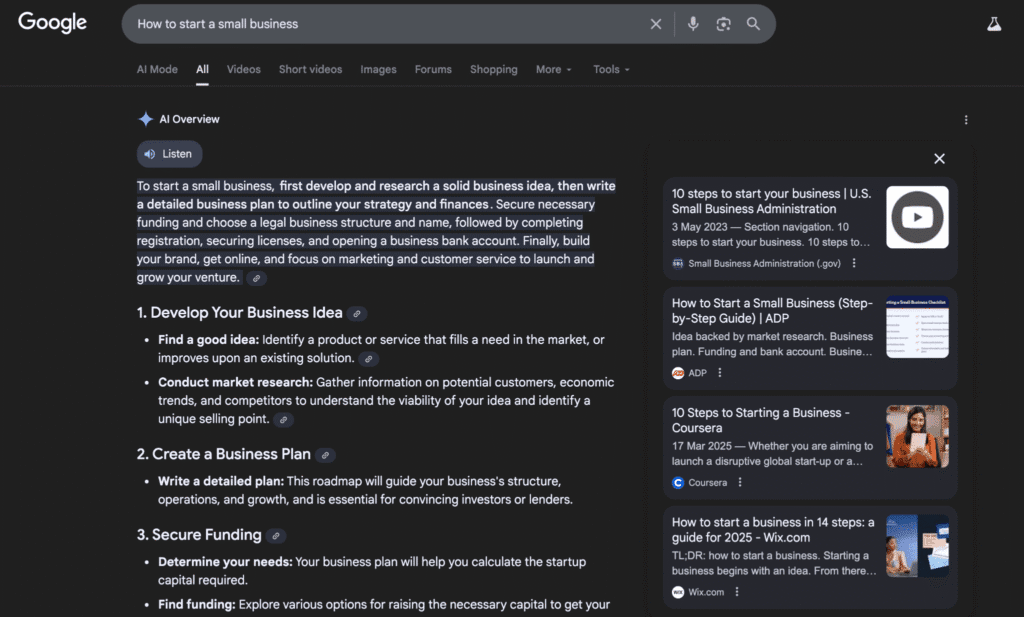
5. Emphasis on Trust, Authority, and Diverse Domains
AI prioritizes content from reliable, authoritative, and varied sources. For marketers, this means building trust, linking to credible references, and ensuring your content is well-researched can make a big difference in visibility.
Why Google AI Mode Matters for Marketers
Here’s why marketers need to pay attention:
1. Shift from Traditional SEO Rankings to AI Citations
Now, AI-driven results often highlight content via citations rather than classic rankings. This means your authority, relevance, and trustworthiness are just as important as keywords.
2. Traffic Metrics Don’t Show the Whole Picture
Google AI Mode may provide summarized answers directly to users, bypassing your site entirely. Engagement and visibility are now about influence, mentions, and relevance, not just raw traffic.
3. Reputation & Brand Mentions Influence Visibility
AI evaluates the credibility of sources, meaning brands with strong reputations, expert content, and positive mentions are more likely to be surfaced. Your brand’s voice, authority, and consistency now have a direct impact on search presence.
4. Real-World Changes in Search Behavior
CTRs (Click-Through-Rates) on traditional results are declining, while users increasingly rely on AI-generated summaries and conversational responses. Search behavior is evolving, and brands need to evolve with it.
Key Differences Between AI Mode and Traditional Search
| Feature | Traditional Search | Google AI Mode |
| Source Diversity | Mainly top-ranking pages | Pulls from diverse sources, including community platforms like Reddit |
| Response Size | Short snippets or links | Longer, more comprehensive answers for commercial queries |
| Interface | Standard SERPs with 10 links | Conversational and exploratory, with follow-up query options |
| Overlap with Top 10 Organic Results | High; same pages dominate | Lower; AI often surfaces new or less-prominent sources |
How to Optimize for Google AI Mode (Step-by-Step)
Here’s how to start:
Step 1: Double Down on Core SEO Best Practices
Even with AI in the picture, the foundation still matters. Here’s what to focus on
1. Fast, Mobile-Friendly Pages
Speed and mobile usability are essential. Google’s AI Mode prioritizes quick-loading content that works seamlessly across devices.
2. Clean Heading Hierarchy & Structured HTML
Clear headings (H1, H2, H3) and well-structured HTML make it easier for AI to understand your content. This helps ensure your pages are accurately cited and summarized in AI-generated responses.
3. Conversational Formatting
AI prioritizes content that’s easy to scan and answer-focused. Use short paragraphs, bullet points, and question-answer formats. Put the most important info first so the AI can pull it quickly.
4. E-E-A-T: Experience, Expertise, Authority, Trust
Include author credentials, real-world examples, and citations from reputable sources. AI favors trustworthy content when generating summaries or citations.
Step 2: Expand Your Brand Footprint Beyond Your Website
The more credible and visible your brand is, the more likely AI is to cite or reference your content. Here’s how to do it:
1. Contribute to High-Authority Forums & Communities
Platforms like Reddit, Quora, and Stack Overflow are goldmines for demonstrating expertise. Answer questions thoughtfully, share insights, and link to relevant content. AI picks up on these when determining authority.
2. Claim & Optimize Directory Listings
Make sure your brand is properly represented on sites like LinkedIn, Crunchbase, and niche directories. Complete profiles with accurate info, descriptions, and links increase trustworthiness.
3. Earn Mentions from Credible Sources
Getting cited by .edu, .gov, reputable news outlets, and niche publishers significantly boosts your authority. AI favors brands that are recognized across diverse, trusted domains.
4. Maintain Consistent Brand Data
Ensure your name, address, phone number, and other key details are consistent across all platforms. Consistency builds credibility and ensures AI accurately associates your brand with your content.
Step 3: Create Citation-Worthy Content
If your material is valuable, credible, and unique, AI is more likely to pull it into summaries and conversational answers. Here’s how to make your content citation-worthy:
1. Publish Original Research or Proprietary Data
Share insights that can’t be found elsewhere. Surveys, studies, or unique analytics position your brand as a source that others and AI trust.
2. Use Expert Quotes, Case Studies, & Unique Insights
Including industry expert opinions, real-world examples, and actionable insights signals authority and depth. AI prefers content that demonstrates expertise, not generic information.
3. Structure Content into Modular, Digestible Sections
Break your content into clear headings, short paragraphs, and bullet points. Modular content is easier for AI to analyze, summarize, and pull from when generating responses.
4. Include Clear Stats & Attributions
Numbers matter, but AI trusts verified sources. Always include stats with proper attributions, so link to reputable references wherever possible.
Step 4: Optimize for Conversational Queries
To make your content AI-friendly, you need to write like you’re talking to your audience. Here’s what you need to do:
1. Use Question-Based Headings
Structure your content with H2s that pose questions like “How does Google AI Mode affect marketing?” or “What is the best strategy for AI citations?”. This makes it easier for AI to identify answers.
2. Answer Directly, Then Elaborate
Start with a concise, clear answer to the question, then provide additional details, examples, or context. AI likes content that’s structured this way for summaries and snippets.
3. Add FAQ Section and FAQ Schema Markup
FAQs are a perfect way to anticipate user questions. Adding the FAQ schema ensures AI recognizes your content as a structured source of answers.
4. Write Naturally
Avoid overly technical or stiff language. Write as if you’re responding to a real person, keeping sentences short, clear, and conversational.
Step 5: Track AI Visibility and Mentions
To stay ahead, you need to track how your brand and content are being referenced by AI. Here’s how to do it effectively:
1. Monitor Citations in Google AI Mode
Traditional rankings reports won’t tell the whole story anymore. Keep an eye on where your content is cited in AI-generated summaries and conversational responses.
2. Use AI Visibility Tracking Tools
Platforms like Semrush AI SEO Toolkit help you track AI-specific mentions and visibility, giving you actionable insights into which content is performing best.
3. Compare Share of Voice with Competitors
Understanding how often your brand appears versus competitors can help you identify gaps and opportunities. AI-driven search favors authoritative and relevant sources. Tracking this ensures you stay competitive/
4. Evaluate Sentiment & Accuracy of Mentions
Not all mentions are equal. Check whether your brand is cited positively and accurately, and adjust your content strategy if AI is misrepresenting or underpresenting your message.
Metrics That Matter in the AI Mode Era
To ensure real impact, marketers need to focus on AI-specific signals that reflect visibility, authority, and audience engagement. Here’s what matters most:
1. Brand Mentions and Citations
Track how often AI references your brand or content in summaries, sidebar citations, or conversational answers. More mentions mean more credibility in AI’s eyes.
2. Share of Voice in AI Summaries
Measure how frequently your content appears compared to competitors in AI-generated results. This gives insights into your relative authority and influence in your niche.
3. Sentiment Analysis of AI-Generated Answers
Not all mentions are positive. Evaluating the tone and accuracy of AI citations helps you adjust messaging and improve brand perception.
4. Engagement Signals Beyond Clicks
AI-driven search often surfaces answers directly, bypassing clicks. Focus on time on page, content consumption, downloads, and interactions. These show real audience engagement, even if clicks don’t spike.
Advanced Strategies for Marketers
Once you’ve mastered the basics, it’s time to take your Google AI Mode optimization to the next level.
1. Use Structured Data for Every Key Content Type
Schema markup isn’t just for traditional SEO anymore. Adding structured data to articles, FAQs, product pages, and videos helps AI understand and accurately reference your content.
2. Syndicate High-Value Content to Reputable Partners
Sharing your content on authoritative websites or niche partners boosts trust signals and reach. AI favors sources that are widely recognized and cited.
3. Leverage PR and Community Building
Mentions in media outlets, industry blogs, and active community engagement strengthen your brand’s credibility and visibility. AI pays attention to these trust signals when determining citations.
4. Update Content Frequently
Fresh content performs better in AI-driven search. Regularly updating articles, stats, and case studies keeps your content relevant, accurate, and more likely to be referenced.
Google AI Mode is not a threat. It’s an opportunity. Marketers who embrace AI, adapt their strategies, and prioritize trust and relevance will see better visibility, smarter engagement, and stronger brand authority in 2025 and beyond.
The time to optimize is now. Start experimenting, track your impact, and let AI help elevate your marketing game.
Check out our other AI-related blogs:
- AI Browsers – What Marketers Need to Know & Complete Playbook
- Top AI Title Generators
- Best AI Tools to Turn Blog Content to Videos
FAQs
Results can vary depending on your niche, content quality, and competition, but most marketers start noticing improved citations and AI-driven visibility within 4-12 weeks. Consistent updates and tracking are key to accelerating results.
Yes. For example, e-commerce brands should optimize product descriptions. FAQs and reviews for AI summaries, while SaaS companies can focus on tutorials, case studies, and thought leadership content. Tailor your approach to the types of queries your audience is asking.
Think of AI optimization as an extension, not a replacement, of SEO. Core SEO fundamentals like page speed, mobile-friendliness, and structured content remain essential. Layer AI-friendly strategies like conversational content, citation building, and tracking on top to maximize visibility.
AI Mode complements Google’s existing updates. Pages that load quickly, are mobile-friendly, and provide a great user experience perform better. Structured, trustworthy content combined with good technical SEO signals increases the likelihood that AI will reference your content.
Tools like Semrush AI SEO Toolkit, Ahrefs, and Moz offer AI-specific tracking features. They help monitor citations, share of voice, and sentiment in AI-generated answers, giving you actionable insights for optimization.

